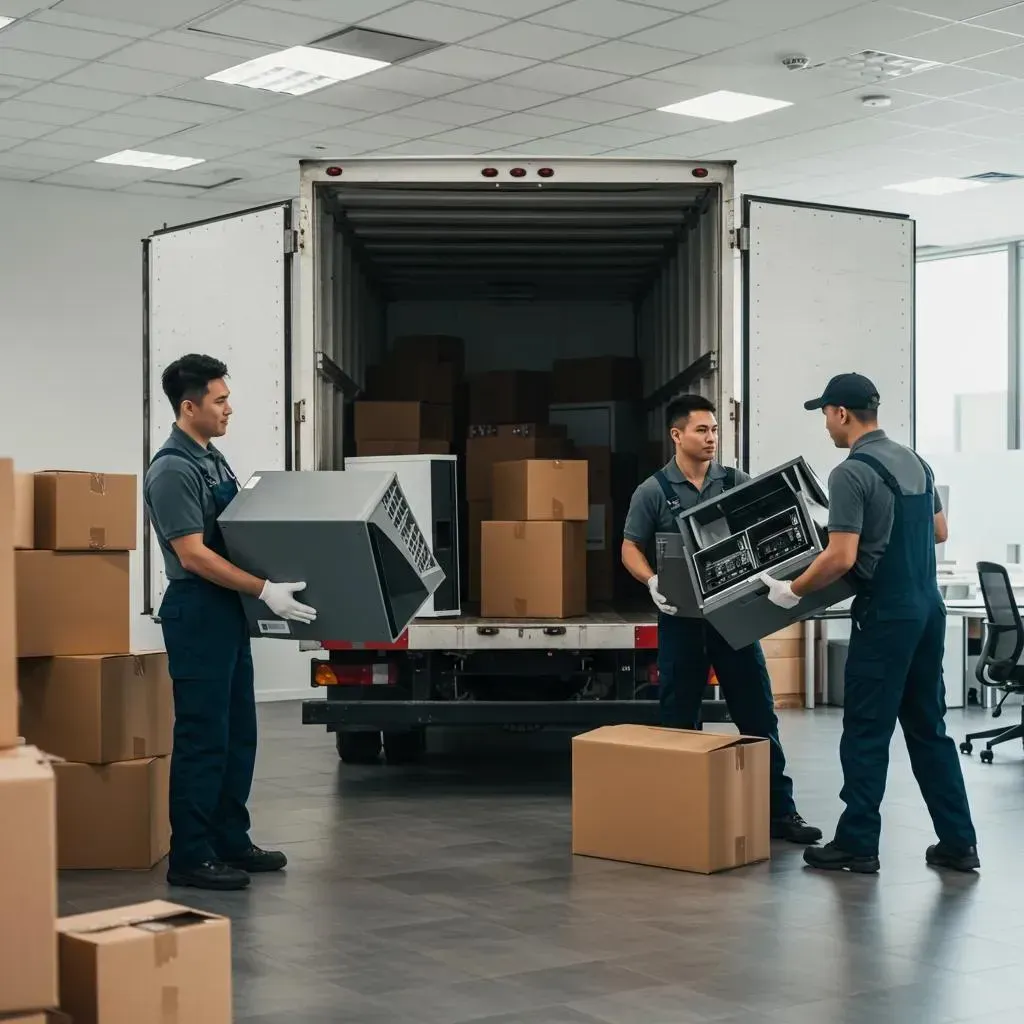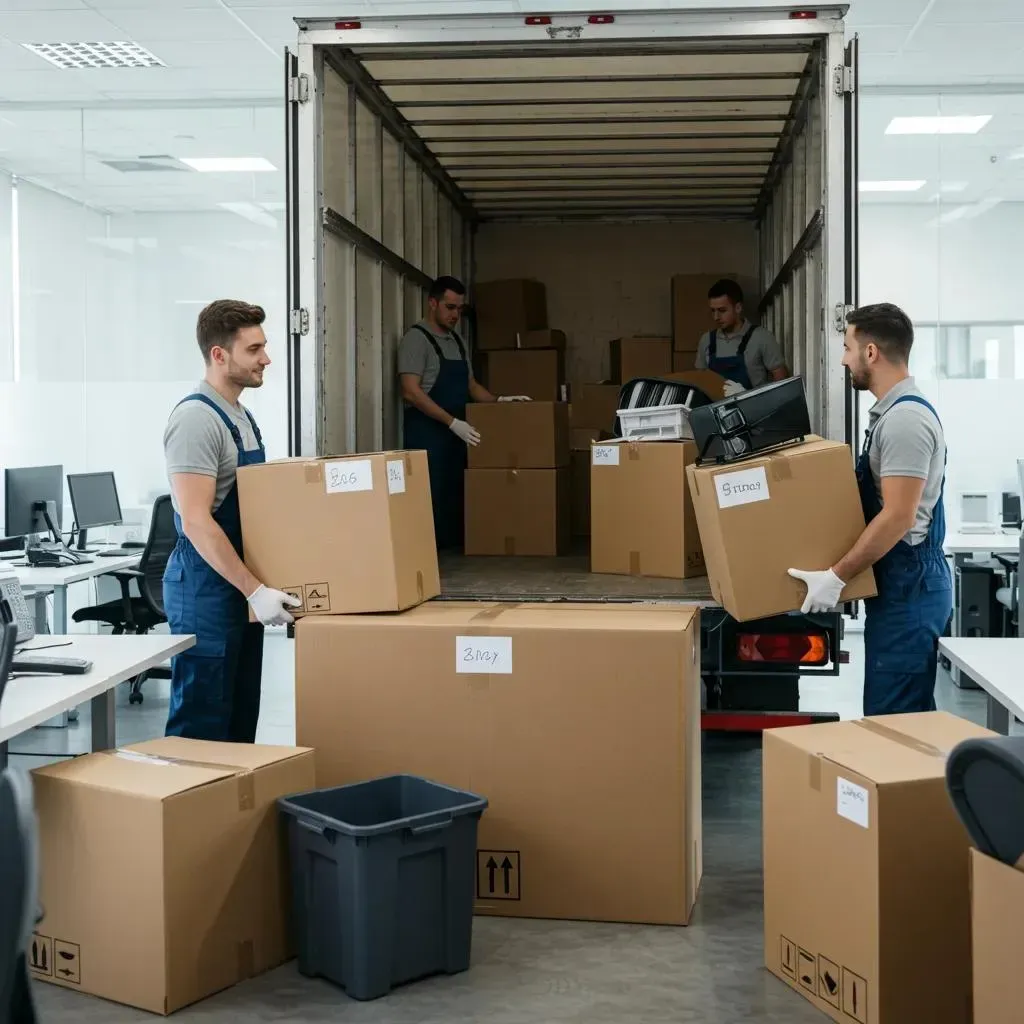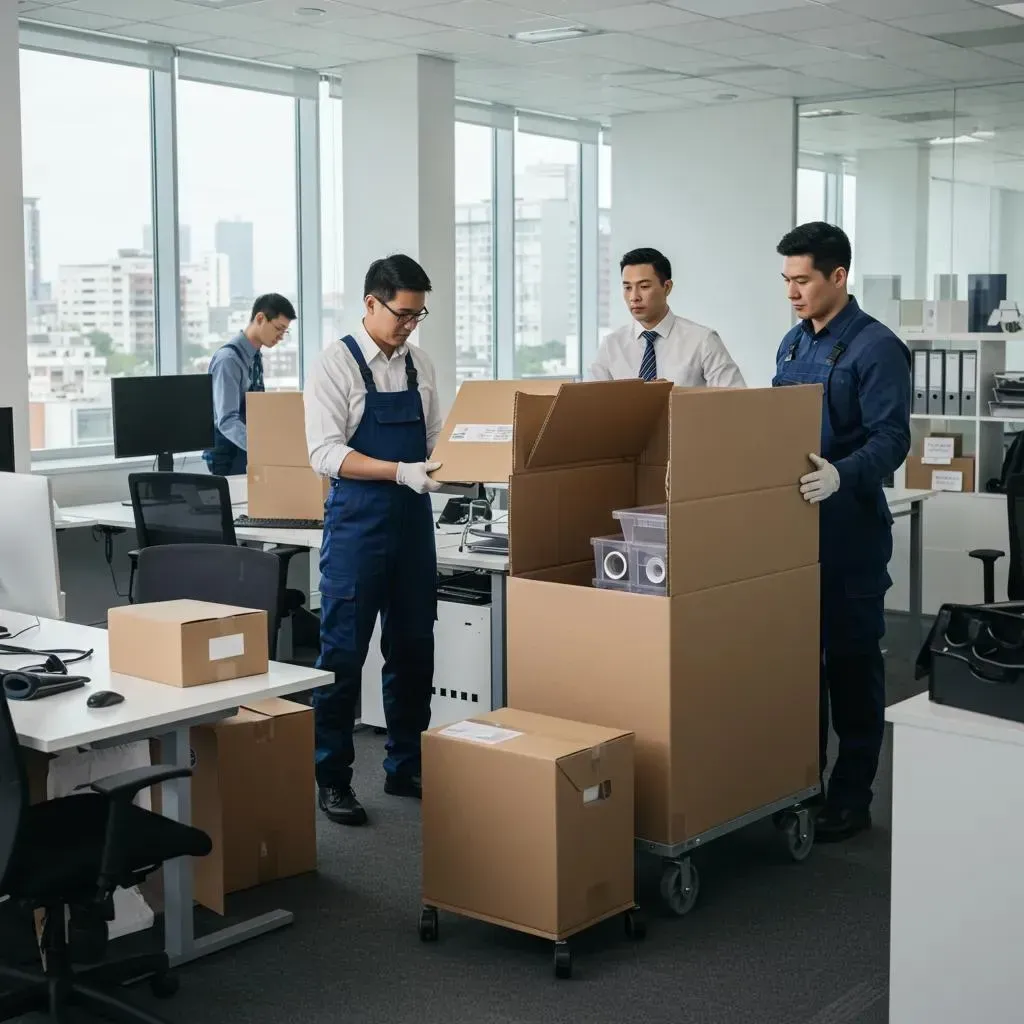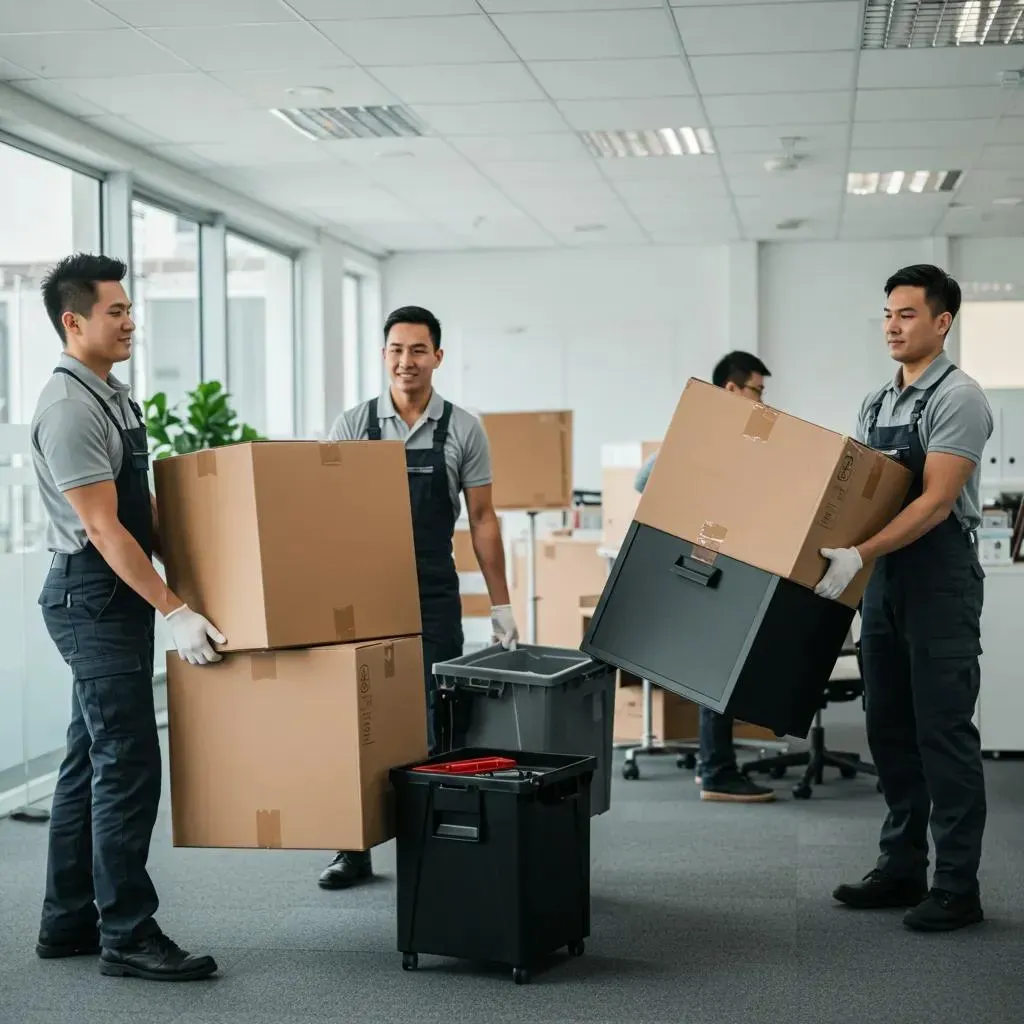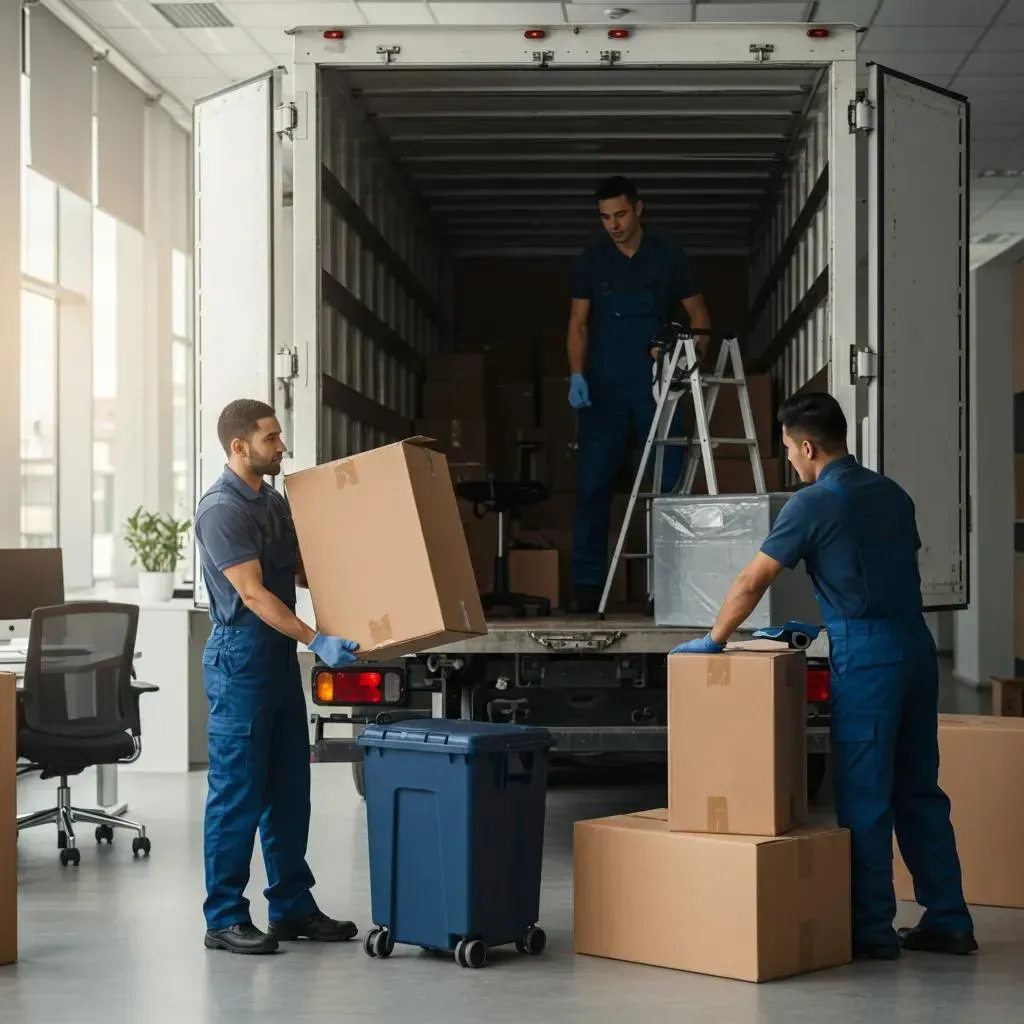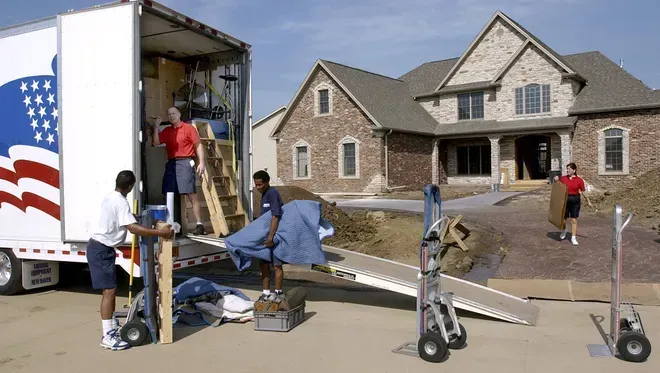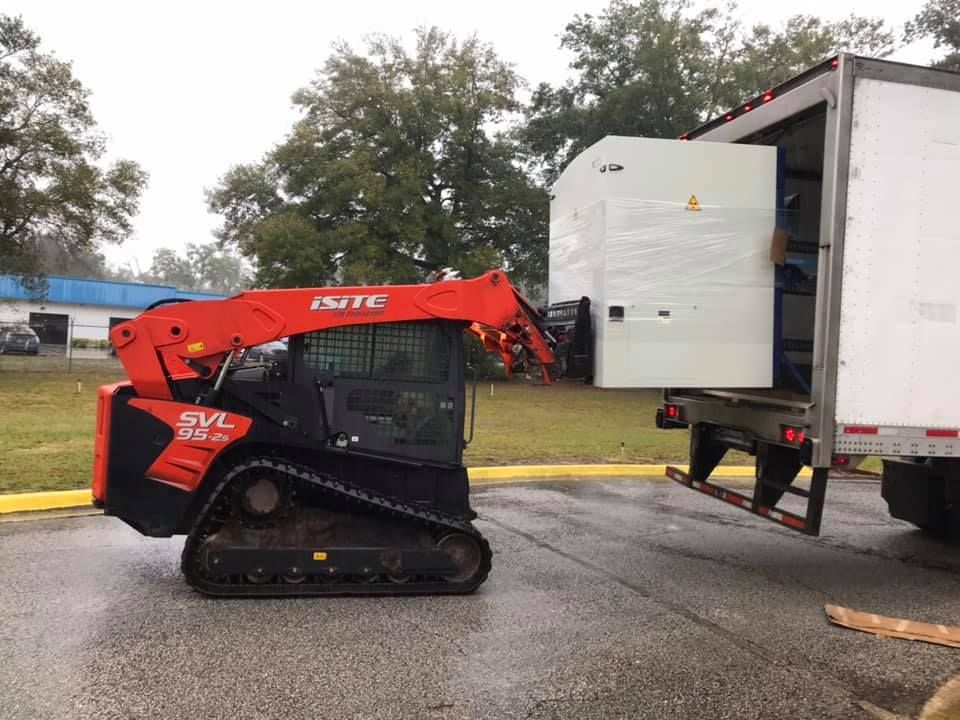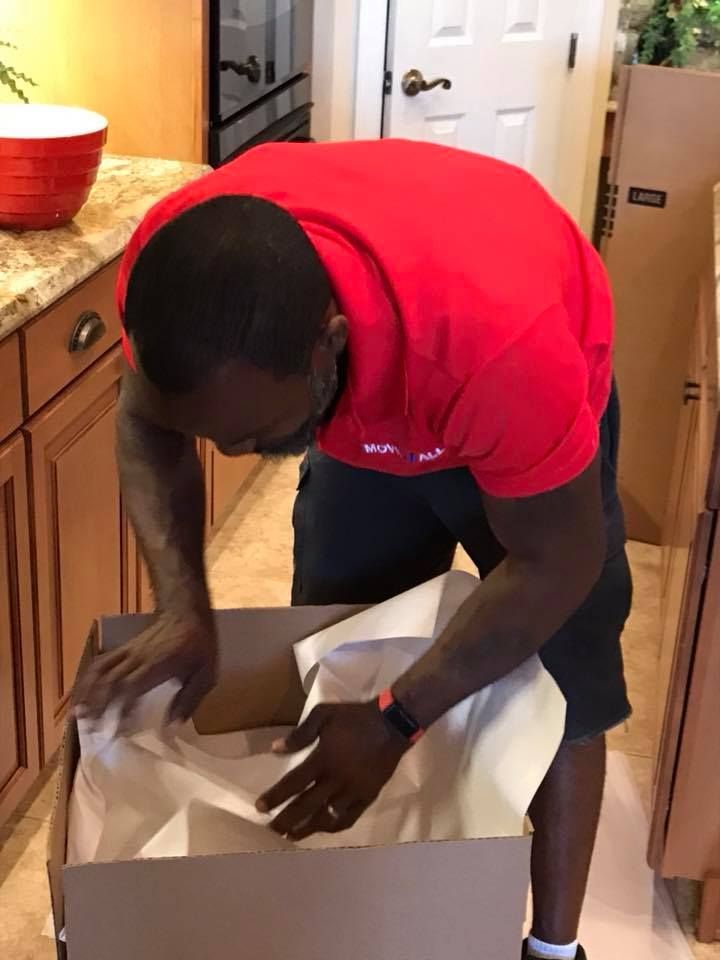BLOG
We Earned Their TRUST...
Now, Let Us Earn Yours!
Your Ultimate Residential Moving Checklist for a Stress-Free Relocation: A Complete Planning and Packing Guide

Relocating to a new home can feel daunting, but having a detailed residential moving checklist ready from the start turns potential chaos into a clear path forward. This guide will walk you through when to kick off your planning, how to organize each stage, essential packing strategies, moving day essentials, what to do once you've arrived, expert tips for keeping stress at bay, and how MOVE IT ALL’s residential moving services can make your entire relocation experience truly seamless. You’ll discover how to declutter like a pro, set a budget that makes sense, pick out the perfect packing supplies, manage your utilities and important paperwork, handle the needs of kids and pets, unpack smartly, and tap into professional support that gives you peace of mind every step of the way. Follow this timeline-focused, information-rich checklist to navigate your move with professional ease and embrace a smoother transition into your new home.
When Should You Start Your Residential Moving Checklist?
Getting your residential moving checklist started eight to twelve weeks before your move date gives you plenty of time to tackle key tasks without feeling rushed. Early planning helps reduce last-minute panic by breaking down preparations into manageable steps, from clearing out rooms to booking your movers. For instance, starting a room-by-room decluttering session two months in advance allows you to identify furniture that needs special packing or items you can donate, setting the stage for a much smoother packing process later on. This structured timeline approach promotes steady progress and builds momentum toward a successful, stress-free move.
How Early Should You Begin Planning Your Move?
Starting your move planning at least ten weeks before you relocate is crucial for securing the best prices and availability for moving services. Research indicates that larger moves, especially those involving long distances or international destinations, are often booked twelve to sixteen weeks in advance, while local moves typically get scheduled six to eight weeks out. Beginning early gives you the opportunity to compare quotes, read customer reviews, and align your schedule with important dates like school enrollment or lease end dates.
What Are the Key Milestones in a Home Relocation Timeline?
Here’s a look at the essential milestones to guide your residential relocation timeline:
| Milestone | Timeframe Before Move | Purpose |
|---|---|---|
| Decluttering & Downsizing | 8–10 weeks | Reduce the volume of items to pack and move |
| Budget Creation & Expense Review | 7–8 weeks | Allocate funds and keep track of all moving costs |
| Mover Research & Booking | 6–7 weeks | Secure professional packing and transportation services |
| Utility Transfers & Address Updates | 4–6 weeks | Ensure uninterrupted service and correct mail delivery |
| Packing Non-Essentials | 3–4 weeks | Pack away seasonal items or things you rarely use |
| Final Packing & Valuables Prep | 1–2 weeks | Safeguard delicate items and pack your essential boxes |
How Many Weeks in Advance Should You Book Professional Movers?
It’s recommended to book your residential movers at least six weeks before moving day for local moves and eight to twelve weeks in advance for long-distance relocations. Booking early ensures you get your preferred dates, competitive pricing, and access to a full range of packing services. Reserving professional movers ahead of time also allows for an in-home assessment to identify any special requirements, such as moving a piano or custom crating for valuable artwork.
How Do You Plan and Organize a Stress-Free Residential Move?
Successful planning and organization come down to effective decluttering, smart budgeting, careful document management, and choosing trustworthy movers. A systematic approach combines strategic downsizing with clear cost tracking and ensures your important records are transferred securely. Layering room-by-room inventories with milestone checklists helps consolidate tasks and keeps you on track for a smooth relocation. Bringing in professional packing services can significantly boost efficiency and protect the condition of your belongings.
What Are Effective Decluttering and Downsizing Strategies?
Decluttering involves sorting your belongings into categories: keep, donate, sell, or discard. This process helps reduce the volume of items you need to move, which can lower costs. Start with areas you use less frequently, like attics or garages, and then move on to your main living spaces. Hosting a small yard sale or donating items to local charities can simplify decision-making and benefit community organizations. Downsizing early also helps you identify furniture that might need special handling or items that could be more affordably replaced after you move.
How Do You Create a Moving Budget That Works?
To create a moving budget, start by listing your fixed costs, such as mover fees and truck rentals, and then add your variable expenses, like packing supplies and potential storage fees. Use a spreadsheet to track estimates, categorizing costs by room or supply type. It’s wise to include a contingency fund of 10–15% for unexpected expenses. Reviewing this budget weekly will help you spot potential overspending and keep your financial plan aligned with your moving timeline.
How to Manage Important Documents and Records Before Moving?
Keep your essential documents—like lease agreements, mortgage papers, insurance policies, and medical records—organized in a centralized, waterproof folder to prevent them from getting lost during the move. Remember to notify financial institutions, government agencies, and healthcare providers of your change of address. Creating digital copies and storing them securely in encrypted cloud folders provides an extra layer of backup and ensures you can access them if needed.
How to Research and Hire Reliable Residential Movers?
When researching movers, be sure to check their licensing, insurance, customer reviews, and the range of services they offer. Look for companies that specialize in residential moves and compare their packing services, pricing, and guarantees. MOVE IT ALL, a full-service residential moving company based in Orlando, FL, offers a blend of local expertise and long-distance capabilities, along with various packing options and clear, upfront pricing. Always request in-home estimates and confirm whether you're receiving a binding or non-binding estimate to lock in your costs and ensure a stress-free moving day.
What Are the Essential Packing Tips and Supplies for Moving House?
Successful packing relies on using the right supplies and employing strategic, room-by-room methods. Investing in sturdy boxes, bubble wrap, packing paper, and clear labels will protect your belongings and keep everything organized. Following systematic packing guidelines helps prevent damage to delicate heirlooms and ensures that items you need right away are easily accessible. By matching your supplies to the items you're packing and using an inventory system, you can speed up both the packing and unpacking processes.
Which Packing Supplies Are Must-Haves for a Residential Move?
Here’s a guide to the essential packing supplies you’ll need:
| Supply | Attribute | Purpose |
|---|---|---|
| Corrugated Boxes | Various sizes | Ideal for general household items and heavy books |
| Packing Paper | Acid-free | Perfect for wrapping delicate dishware and glassware |
| Bubble Wrap | Different bubble sizes | Provides cushioning for electronics and fragile decor |
| High-Quality Tape | Strong adhesive | Ensures secure box closures and seals crates effectively |
| Permanent Markers | Fine and bold tips | For clearly labeling boxes with contents and destination rooms |
How to Pack Room-by-Room Efficiently?
Start by packing rooms you use least, such as attics or guest bedrooms, and save your daily essentials for last. Clearly label every box with its contents and the room it belongs in, along with its unpacking priority. Organize your packed boxes by room near doorways to make it easier for movers to work and to prevent items from getting mixed up. Focus on one room at a time to stay organized, and try to pack similar items together to simplify the unpacking process.
What Are the Best Techniques for Packing Fragile and Specialty Items?
To protect fragile items, layer cushioning materials inside your boxes, placing heavier items at the bottom and lighter ones on top. Use custom crates or wardrobe boxes for fine art, mirrors, and garments that need to stay on hangers. Wrap electronics in anti-static bubble wrap and secure cords in labeled plastic bags. For specialty items like pianos, pool tables, or antiques, it’s best to hire professional movers who have the specialized tools and expertise for safe handling.
How to Label and Inventory Boxes for Easy Unpacking?
Implement a simple inventory system by assigning a number to each box label and keeping a master spreadsheet that lists the contents and the room assignment for each. You can use color-coded stickers to indicate specific rooms, and mark boxes with labels like “Open First,” “Fragile,” or “Do Not Stack.” This method makes it much faster to find critical items on your first day and helps movers understand stacking and handling priorities.
How Do You Manage Moving Day Logistics for a Smooth Relocation?
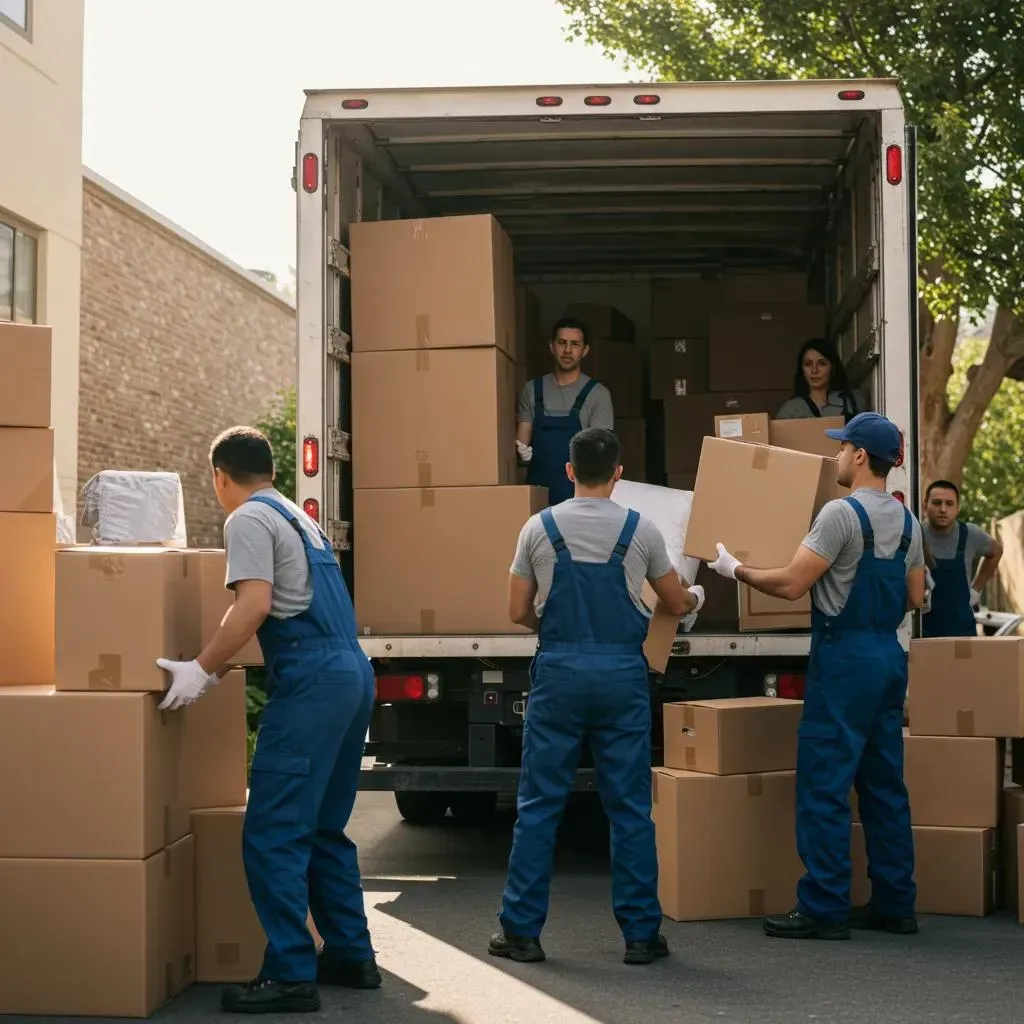
Coordinating utilities, packing an essentials box, managing the needs of your family, and overseeing the movers are key to ensuring moving day goes off without a hitch. Make sure to transfer or set up essential services in advance, prepare a kit of must-have items, and establish clear communication with your moving team. Regular check-ins and a final walkthrough will confirm that all tasks are completed and nothing is left behind.
What Utilities Should You Transfer or Set Up Before Moving Day?
Arrange to transfer your electricity, water, gas, internet, and waste services two to three weeks before your move to avoid any gaps or overlaps in service. Schedule the disconnection at your current address and the activation at your new home for the same day to ensure continuous access. Confirm with your providers any deposit requirements or inspection appointments to guarantee a smooth transition.
How to Prepare an Essentials Box for Moving Day?
Your essentials box should include items like toiletries, a change of clothes, snacks, basic tools, phone chargers, important documents, and a first-aid kit. Keep this box with you, rather than on the moving truck, so you can easily access necessities as soon as you arrive at your new home. Label it clearly and let your family members know where it is to avoid any frantic searching on move-in day.
What Are the Best Practices for Moving with Pets and Children?
Try to maintain familiar routines for children and pets by setting up a safe, quiet space for them with their favorite toys, food, and familiar blankets. If possible, arrange for pets to travel separately from the main household items to minimize their stress and ensure they get regular breaks. Communicate a clear schedule to children so they know what to expect, which can help reduce anxiety and allow movers to work more efficiently.
How to Coordinate and Supervise the Moving Process?
Designate one person to greet the moving crew, review the inventory list, and oversee the loading process. Provide a floor plan of your new home with instructions on where boxes should be placed, and pay special attention to fragile or high-value items. Conduct periodic walkthroughs during both loading and unloading to ensure items are being handled properly and that nothing is overlooked.
What Should You Include in Your Final Walkthrough Checklist?
Your final walkthrough should confirm that all closets, cabinets, attics, and storage areas are completely empty, utilities are turned off, windows are locked, and all keys have been collected. Make sure all trash has been removed and any minor repairs required by your lease or sale agreement have been addressed. Completing this inspection ensures you leave nothing behind and protects you from potential future liabilities.
What Steps Should You Take After the Move to Settle In Quickly?

Once you’ve moved, your tasks will include unpacking strategically, updating your important records, and getting to know your new neighborhood. Taking a phased approach will help you feel comfortable more quickly, reduce frustration, and integrate smoothly into your new surroundings. By prioritizing which rooms to unpack first and familiarizing yourself with local resources, you can transition seamlessly from moving day to truly living in your new home.
How to Unpack Strategically for a Stress-Free Setup?
Begin by unpacking the essentials for your kitchen and bedrooms, as these areas are crucial for daily routines. Use your color-coded labeling system to direct boxes to their correct rooms and unpack items in order of priority. Focus on completing one space at a time, and be sure to dispose of packing debris as you go to maintain a safe and organized environment.
When and How Should You Update Your Address and Records?
Submit your change-of-address requests with the postal service, your banks, insurance providers, and any professional licensing boards within the first week of moving. Update your driver’s license and voter registration promptly to comply with legal requirements and ensure you receive important mail without delay.
How to Explore and Integrate into Your New Community?
Discover nearby grocery stores, healthcare facilities, schools, and recreational spots by visiting local community centers or checking with neighborhood associations. Attend local events, join community social media groups, and introduce yourself to your new neighbors. Building these connections will help you establish support networks and quickly feel a sense of belonging.
What Are Essential Post-Move Cleaning and Maintenance Tips?
Give high-traffic areas like kitchens and bathrooms a thorough cleaning before you start unpacking to create a fresh living space. Test your smoke detectors, change HVAC filters, and inspect plumbing fixtures for any leaks. Addressing maintenance needs early on can prevent minor issues from becoming bigger problems and ensure your new home remains safe and comfortable.
What Are Expert Tips for Making Your Residential Move Less Stressful?
Expert advice often highlights the benefits of using professional services, avoiding common moving pitfalls, and utilizing digital tools for organization. By combining these expert practices with your own personalized checklists, you can maintain control and clarity over every detail of your move. Incorporating professional packing assistance, interactive timelines, and proven strategies for avoiding mistakes can transform your move from a chore into a well-coordinated transition.
How Can Professional Packing Services Reduce Moving Stress?
Professional packers can significantly streamline the moving process. They come equipped with all the necessary materials, expertly handle fragile items using industry-standard tools, and pack efficiently and uniformly. This level of expertise minimizes the risk of damage and frees you up to focus on scheduling and coordination rather than spending time taping boxes and wrapping items, which greatly reduces moving day anxiety.
What Are Proven Strategies to Avoid Common Moving Mistakes?
To avoid common moving mistakes, make sure you don’t leave packing until the last minute by following a room-by-room timeline. Double-check your inventory list during loading, and always confirm your movers’ credentials before they arrive. Label cords and electronics meticulously, disassemble large furniture well in advance, and maintain open communication with your moving team. These steps help prevent delays and ensure your belongings are protected.
How to Use Interactive Checklists and Tools to Stay Organized?
Digital moving apps and cloud-based spreadsheets allow you to share checklists, track your progress, and update tasks in real time with family members or your moving coordinator. Interactive maps can guide movers on where to place boxes, while reminder alerts can prompt you about important tasks like utility transfers, ensuring no detail gets overlooked.
How Can MOVE IT ALL’s Residential Moving Services Help You Have a Stress-Free Move?
MOVE IT ALL’s residential moving services combine local expertise, comprehensive packing options, and long-distance moving capabilities to manage every aspect of your relocation. Their experienced crew offers custom crating, specialized equipment for handling bulky items, and clear, binding estimates. When you choose MOVE IT ALL, you get a dedicated point of contact for all your scheduling, planning, and execution needs, allowing you to focus on settling into your new home.
What Residential Moving Services Does MOVE IT ALL Offer in Orlando, FL?
MOVE IT ALL provides full-service packing, residential loading, transportation, unloading, and unpacking assistance throughout the Orlando area. Their services include furniture disassembly and reassembly, specialty crating for items like artwork and electronics, and optional short-term storage solutions. Every move is backed by comprehensive insurance options and a commitment to punctuality.
How Does MOVE IT ALL Ensure a Smooth Local and Long-Distance Move?
By conducting detailed on-site assessments, MOVE IT ALL’s team can identify unique moving requirements, recommend the most suitable packing materials, and confirm all route logistics. Their fleet management ensures timely departures, and real-time communication keeps you updated throughout the entire transit process. This end-to-end coordination eliminates uncertainty and ensures your belongings are well-protected.
How to Request a Free Moving Quote from MOVE IT ALL?
You can get a complimentary, no-obligation quote by providing details about your inventory, desired moving dates, and the distance of your relocation to MOVE IT ALL’s quoting team. Their transparent process clearly outlines all service components, provides binding cost estimates, and details any optional add-ons, empowering you to choose the ideal moving package with confidence and no hidden fees.
Moving with a clear, prioritized checklist transforms relocation from a source of stress into a well-managed project. By following timeline-driven milestones, using expert packing methods, and leveraging professional moving services, you can minimize risks and maximize efficiency. Thorough planning, transparent budgeting, and strategic execution pave the way for a seamless transition and a confident start in your new home. Trust this comprehensive guide and the dedicated support from MOVE IT ALL to deliver the stress-free move you deserve.


